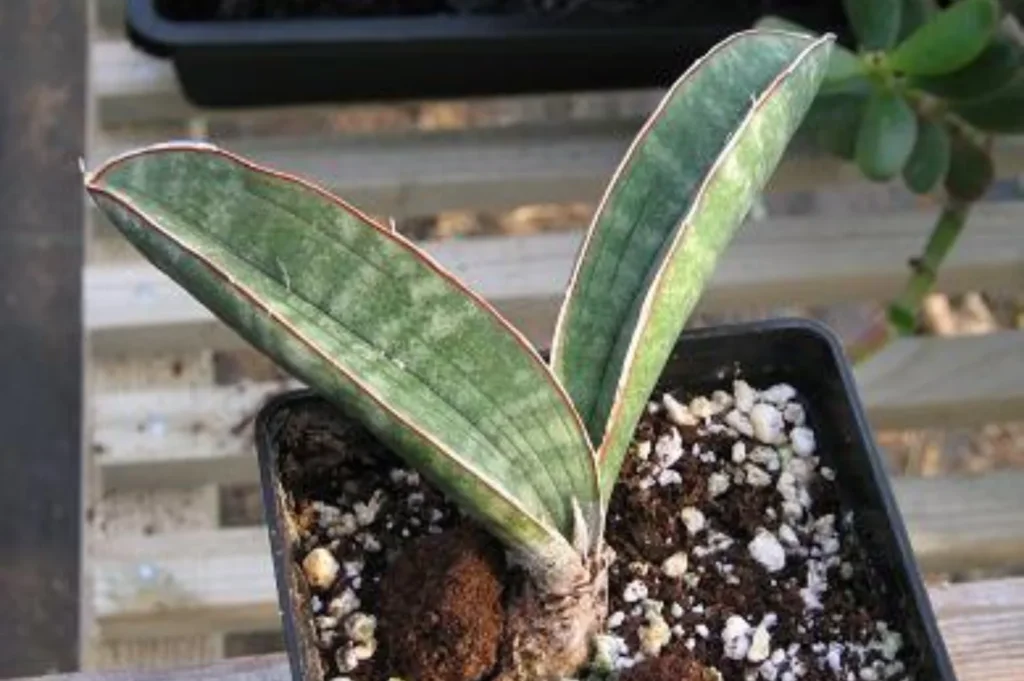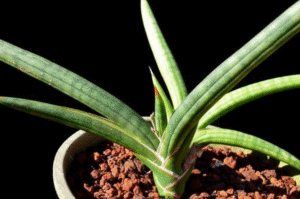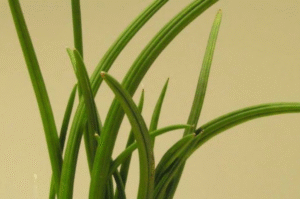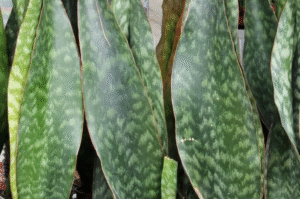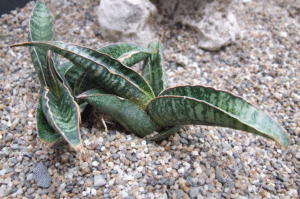Sansevieria hallii, also known as the Baseball Bat Snake Plant, is a rare gem in the world of houseplants. With its thick, cylindrical leaves and unique growth pattern, it’s not only a collector’s favorite but also an ideal choice for beginners who want something striking and low-maintenance.
If you’re looking to expand your indoor jungle or want a drought-tolerant conversation piece, S. hallii is a great pick. This guide will walk you through how to plant, grow, and care for Sansevieria hallii, using insights from plant experts and real grower experiences.
What Is Sansevieria hallii?
Let’s start with the basics.
Sansevieria hallii is a succulent species native to West Africa. Its thick, fleshy, bat-like leaves grow upright or arch slightly, and mature plants can develop underground rhizomes — a feature that makes them extremely hardy.
Unlike its more popular cousins like Sansevieria trifasciata (the classic snake plant), hallii grows slower and stays relatively compact, making it perfect for apartments and small spaces.
Quick Facts:
- Common Name: Baseball Bat Snake Plant
- Botanical Name: Sansevieria hallii
- Growth Habit: Clumping, upright
- Mature Height: 12–24 inches
- Sunlight: Bright indirect to full sun
- Watering Needs: Low (drought-tolerant)
- Hardiness Zone: 10–11 (USDA)
Why Choose Sansevieria hallii?
Unique Aesthetic Appeal
Its tubular leaves resemble baseball bats, no surprise where the nickname came from. The pattern and texture are unlike most houseplants, which makes it a focal point in any indoor collection.
Low Maintenance
Like other snake plants, S. hallii is nearly indestructible. Forget to water it for a week or two? It’ll forgive you.
Air Purifying Qualities
NASA studies have confirmed that snake plants can filter toxins like formaldehyde and benzene, and hallii is no exception.
How to Plant Sansevieria hallii
1. Choose the Right Pot
Start with a well-draining pot, preferably terracotta or ceramic with drainage holes. Avoid plastic containers that trap moisture, as this plant is prone to root rot in soggy soil.
2. Select the Best Soil Mix
Use a cactus or succulent mix. You can also DIY by combining:
- 2 parts coarse sand or perlite
- 2 parts potting soil
- 1 part orchid bark or pumice
This mix ensures fast drainage and mimics its native environment.
3. Planting Steps
- Fill the pot halfway with your soil mix.
- Place the rhizome or root ball gently in the center.
- Cover the roots with soil, leaving the base of the leaves exposed.
- Lightly press the soil around the plant and water sparingly.
Pro Tip: Let the plant sit in a shaded area for 1–2 days post-planting before moving it to its final location.
Ideal Growing Conditions
Light Requirements
Sansevieria hallii prefers bright, indirect light but can handle direct morning sun. If you’re growing it indoors, place it near a south- or east-facing window.
What to Avoid:
- Low light = slow growth.
- Too much direct afternoon sun = scorched leaves.
Temperature & Humidity
- Ideal temperature: 60°F to 85°F (15°C to 29°C)
- Humidity: Average indoor humidity is perfect.
Avoid cold drafts or temperatures below 50°F (10°C), especially during winter.
Watering Sansevieria hallii
The golden rule? When in doubt, don’t water.
Watering Frequency:
- Spring/Summer: Once every 2–3 weeks
- Fall/Winter: Once a month or less
Always allow the soil to dry out completely between waterings. Overwatering is the number one killer of this plant.
Tip: Use the “finger test.” Stick your finger 2 inches into the soil. If it’s dry, it’s time to water.
Fertilizing Needs
Sansevieria hallii isn’t a heavy feeder. However, feeding can boost growth during active seasons.
Best Fertilizer:
- Balanced 10-10-10 or 20-20-20 liquid fertilizer
- Dilute to half strength
- Feed once every 4-6 weeks during spring and summer
Avoid feeding in the fall and winter when the plant is dormant.
How to Propagate Sansevieria hallii
Propagation can be done via division or leaf cuttings, though leaf cuttings are slower.
Division Method (Best Option):
- Gently remove the plant from the pot.
- Identify sections with healthy roots and rhizomes.
- Use a clean, sharp knife to divide the plant.
- Let the cut surfaces dry for 1–2 days.
- Plant each section in its pot.
Leaf Cuttings:
- Cut a healthy leaf into 3–4 inch sections.
- Let the cuttings dry for 2–3 days.
- Plant in a gritty soil mix and water lightly.
Note: Leaf cuttings may not retain variegation and are much slower to root.
Common Problems and Solutions
| Problem | Cause | Fix |
| Yellow Leaves | Overwatering | Let the soil dry completely |
| Wrinkled Leaves | Underwatering or root rot | Check root health and adjust watering |
| Brown Tips | Low humidity or too much direct sun | Move to a shadier spot, avoid leaf misting |
| No Growth | Cold temps or insufficient light | Provide more warmth and light |
Pests to Watch Out For
- Mealybugs: Look like white cotton; treat with neem oil or rubbing alcohol.
- Spider Mites: Fine webbing on leaves; use insecticidal soap.
- Fungus Gnats: Indicate overly moist soil; let the soil dry and use sticky traps.
Regular inspection and proper care will keep these pests at bay.
Styling & Placement Ideas
Here are a few creative ways to display your Sansevieria hallii:
- In a minimalist white ceramic pot on a windowsill
- Combined with other snake plant varieties in a mixed succulent garden
- As a centerpiece on office desks or console tables
Thanks to its sculptural form, this plant adds a touch of modern elegance to any space
Frequently Asked Questions (FAQs)
Is Sansevieria hallii slow growing?
Yes. It’s a slow grower, especially in low-light conditions, but this makes it perfect for small indoor spaces.
Can Sansevieria hallii be grown outdoors?
In USDA Zones 10–11, yes. Otherwise, keep it as an indoor or patio plant.
Is it toxic to pets?
Like most snake plants, S. hallii is mildly toxic if ingested. Keep it out of reach of pets and children.
Let us know in the comments if you’ve tried growing Sansevieria hallii, and don’t forget to check out our care guides for other rare snake plant varieties at All Snake Plant!
Final Thoughts:
If you’re a houseplant lover looking for something unique, hardy, and visually captivating, Sansevieria hallii is a fantastic addition to your collection.
Whether you’re a novice plant parent or an experienced collector, its minimal care requirements, drought resistance, and bold look make it a top-tier choice.
Final Verdict:
Highly recommended for anyone who wants a resilient yet distinctive houseplant with a sculptural edge.

